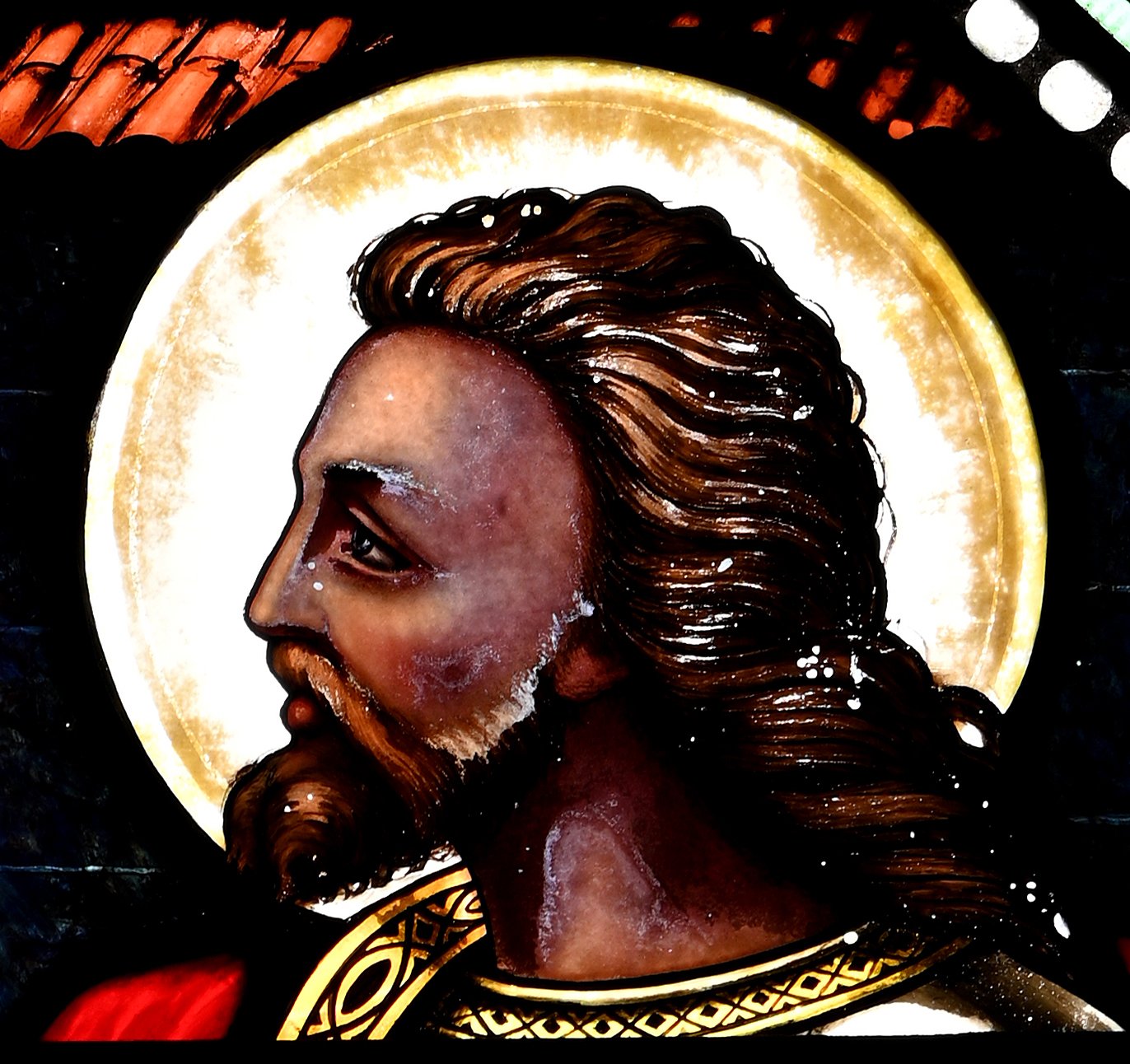
A long-overlooked stained glass window created for a small Rhode Island church 147 years ago has been identified as a historic, first-of-its-kind depiction of Jesus as a Black man.
The work of the studios of Henry Sharp, a prominent 19th-century American stained glass maker, the 1877 window is a marked departure from his usual output. Instead of depicting a singular saintly figure, the 12-by-five-foot window tells a full narrative, with scenes of Jesus at the well with the Samaritan woman and with the sisters Martha and Mary. All the figures have dark brown skin.
“The window is really quite transgressive in lots of ways,” Virginia Raguin, a professor at the College of the Holy Cross, in Worcester, Massachusetts, told Artnet News, pointing out not only the unusual skin tones, but the scenes’ portrayal of men and women as equals. “There are a number of things that are extraordinary about it.”
An expert in stained glass from the 13th-century through to the present day who has published numerous books on the subject, Raguin was called in to examine the mysterious window by Hadley Arnold, an art historian and architectural designer who was in process of converting St. Mark’s Church in Warren, Rhode Island, into her private home.
Henry Sharp Studio, Jesus with dark skin speaking to the Samaritan woman at the well in a window for St. Mark’s Church in Warren, Rhode Island (1877). Photo by Michel Raguin.
The Russell Warren-designed, Greek Revival church was built in 1830, but the parish closed in 2010. Arnold and her husband, Peter Arnold, purchased it from the diocese in 2012, but didn’t notice the unusual skin tones in one of the windows until over a decade later.
At first, the couple didn’t know if they were correctly interpreting what they were seeing. But after considerable research, Arnold feels confident that the artist meant to depict Jesus as a Black man as a radical statement about equality—both on race and gender.
Russell Warren, St. Mark’s Church, Warren, Rhode Island (1830). Photo courtesy of Buildings of New England.
“It’s a rebel window,” Arnold told the Providence Journal, which first reported on the discovery. (Arnold and Raguin also wrote an article for online stained glass magazine Vidimus.)
The first test the window had to pass was whether the dark skin tones would have matched the work’s original appearance. Though there is paint loss on the window in the darkest browns and blacks—as seen in Mary’s hair and in the outlines of many details—the paint on the flesh remains intact.
“Colors in glass can flake off, but they don’t change like oil paint, because they are fired into the glass,” Raguin explained, noting that deteriorating black paint is typical of other Sharp windows of the period, likely resulting from an unsuccessful use of Borax.
Henry Sharp Studio, Jesus with dark skin in a window for St. Mark’s Church in Warren, Rhode Island (1877). You can see the paint loss of the black paint in the outlines. Photo by Michel Raguin.
The Sharp studios had also made three other windows for St. Mark’s, all of which used milky white glass for the skin. It seemed clear that the dark skin was a conscious choice.
“My immediate reaction was, yes, indeed this is a Black Jesus,” Raguin said.
The next step was researching the work’s provenance.
Henry Sharp Studio, a more traditional depiction of Jesus in a window for St. Mark’s Church in Warren, Rhode Island (1877). Photo by Michel Raguin.
A woman named Mary P. Carr donated the window in honor of the sisters Ruth Bourne DeWolf and Hannah Bourne Gibbs. Little is known about Carr, other than she did not marry, and both her parents and brothers died before she was 35.
“My guess is that Ruth DeWolf was a substitute mother for Mary,” Raguin speculated.
DeWolf and Gibbs were both donors to the American Colonization Society, which helped former enslaved people to relocate to Liberia. But though they appear to have been abolitionists, DeWolf also married into a family that made its fortune in the slave trade, and Gibbs to one of their ship captains.
Henry Sharp Studio, Jesus with dark skin speaking to the sisters Martha and Mary in a window for St. Mark’s Church in Warren, Rhode Island (1877). Photo by Michel Raguin.
Raquin’s theory is that Carr donated the window in the sisters’ honor as a way of acknowledging the shame that DeWolf—who had by then passed away—had felt about the origin of the money she had inherited from her husband.
“It was a statement that Jesus is the color of the Jesus in your heart, all around the world,” she said. “If Jesus is my brother and I am Black, Jesus is Black.”
The church left behind few records on the work, but the minister gave a speech not long after its unveiling, telling the congregation that “the peculiar fitness of the scripture scenes portrayed, as in the exquisite beauty of the workmanship, is a most suitable expression of those Christian characters in whose memory it has been erected.”
Henry Sharp Studio, landscapes in a window for St. Mark’s Church in Warren, Rhode Island (1877). Photo by Michel Raguin.
The window is also unique in that it features landscapes in the background, which wouldn’t become a popular feature of stained glass until the turn of the century, thanks to the work of Louis Comfort Tiffany.
Because landscape painting was often the purview of women painters at the time, Raquin believes that Sharp probably hired a woman to handle Carr’s unusual commission request—rather than challenging someone who handled the studio’s normal output to create a work that represented such a major departure from their expertise.
Arnold has removed the historical stained glass windows from the church and hopes to encourage more research into the works. She is working to build a LED-illuminated frame to display the window of Black Jesus, which she would like to donate to an institution.